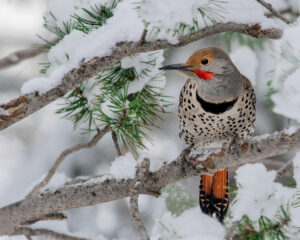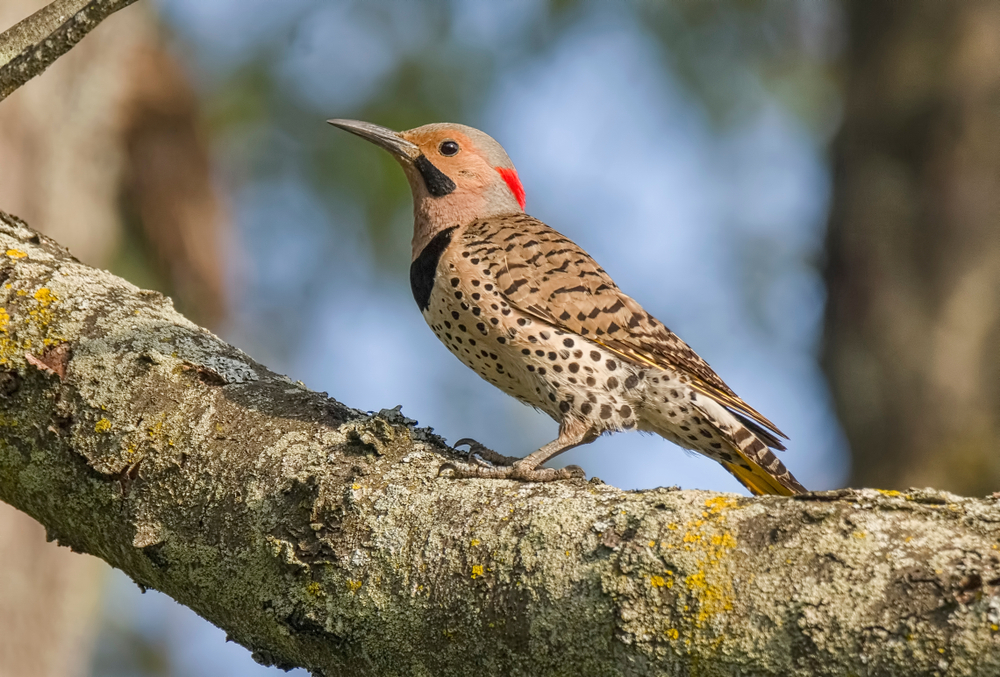Northern Flicker, Colaptes auratus
Bill Rowe
In late winter and early spring, our local resident songbirds (such as Song Sparrows and Red-winged Blackbirds) being practicing their songs, following their instinctive urge to claim a territory and find a mate. One of these early songs, heard around your neighborhood as well as out in the countryside, is the insistent chant of the Northern Flicker—which is a woodpecker, technically not a songbird, but its loud mechanical wik-wik-wik-wik…. is primarily used during territory-posting, just like regular bird songs. At all seasons, flickers are among our easiest birds to see, study, and identify; they tend to perch out in the open, often high in a tree, and they typically feed on the ground, where they hunt primarily for ants. They also eat seeds and fruits and will come to feeders from time to time. Among their “woodpecker-y” traits are a rapid drumming on trees (or sometimes on your gutters and fascia boards) and the digging of nest holes, which may then be adopted in later years by various birds and other creatures. Flickers are widespread throughout North America, from Alaska to Guatemala, with a general migratory retreat in fall from the coldest parts of their nesting range down into the United States. This species, the Northern Flicker, is divided into two major subspecies, called “Yellow-shafted” (from the plains of Colorado eastward) and “Red-shafted” (to the west); these meet in a hybrid zone that runs north to south through the western Great Plains. This zone, and the blending of the two forms, is so extensive that they are currently considered the same species, while a third form, the Gilded Flicker, found mainly in Arizona and western Mexico, is treated as a different species because it is genetically more isolated.
IDENTIFICATION: Flickers are full of field marks. Their brown back, barred with black, and their spotted underparts set them apart from any other local woodpecker; but even more obvious are a black chest patch, a red nape crescent, bright yellow underwings and undertail, and a white rump that shows up as the bird flies away. In addition, the male has a black mustache mark. The western “Red-shafted” form shows up every so often in Missouri, but so do intergrades (hybrids) of the two forms. To claim a pure “Red-shafted” you would need to make sure that all the traits line up that way and you are not seeing a blend of the two forms (although hybrids are interesting too).
ST. LOUIS STATUS: Common year-round in wooded to semi-open country as well as parks and suburbs. Groups of up to scores of flickers may be seen migrating in spring and fall, or just hanging out together in winter.
Learn more and listen to the songs and calls of Northern Flickers here.


Female (no mustache) in flight
Showing white rump patch
Photo Credit: Al Smith

Male “Red-shafted” form




